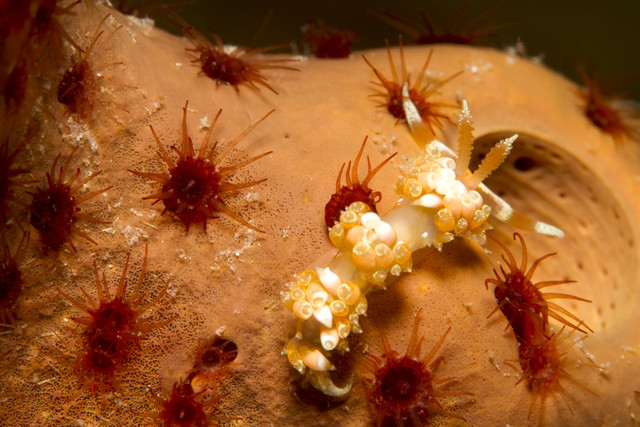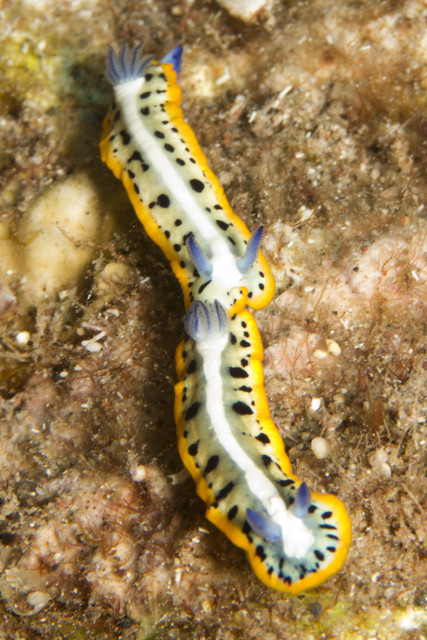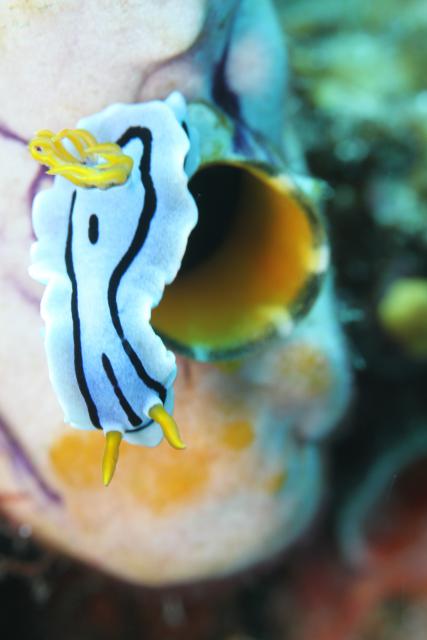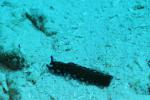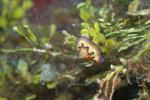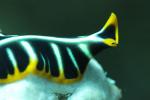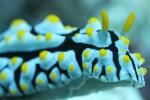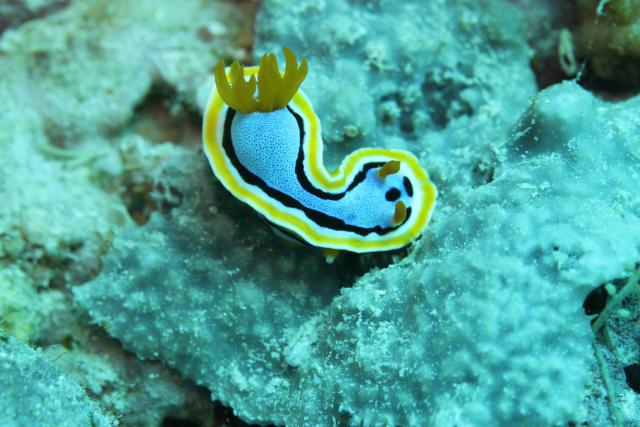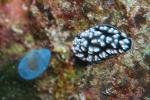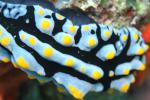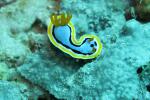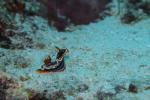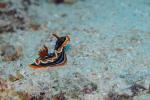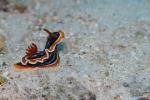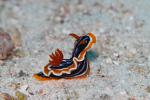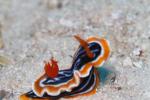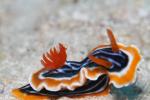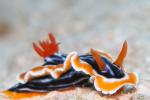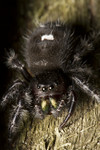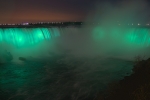nudibranch
Caribbean Explorer: Lettuce Sea Slug (part 2)
ktuli — Wed, 11/02/2011 - 18:37
No - really... he may have been right...
 |
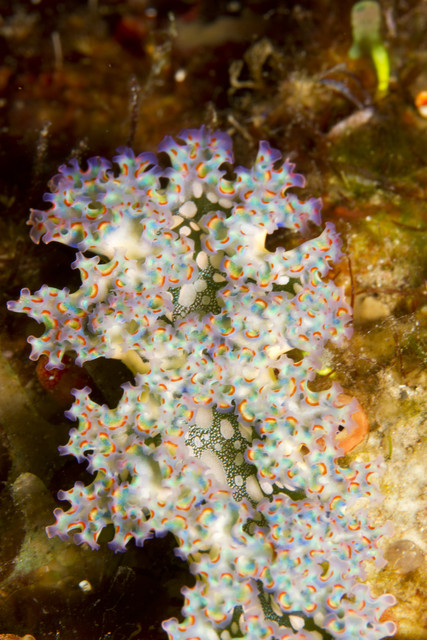 |
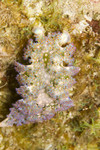 |
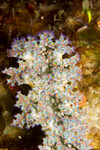 |
 |
Technical Data: Canon EOS 7D, Canon EF 100mm f/2.8L Macro IS USM, 1/120th sec at f/16. Image Stabilization on. ISO 200. Ikelite Housing and Port with Ikelite 161 Strobe in TTL Mode. Raw conversion and cropped in Photoshop CS5 (mouseover for original).
But you have to admit, they certainly do come in a nice variety of colors and patterns to make them interesting. Supposedly the blue versions are rare, but Anya had no problem finding them, but then again, she's a fantastic spotter.
I promise we'll switch to something else tomorrow...
- Bill
Caribbean Explorer: Lettuce Sea Slug (part 1)
ktuli — Tue, 11/01/2011 - 20:35
About midway through the week, after having not been able to find any nudibranchs, I asked our dive guides to help me find some. Our one dive guide, Brett, said that we were moving to an area where we would be able to find some. In particular, he said we would start finding Lettuce Sea Slug (Elysia crispata), and that shortly thereafter, I would get tired of seeing them. I kind of doubted him...
 |
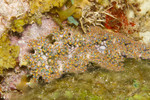 |
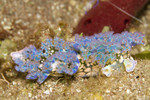 |
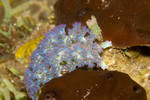 |
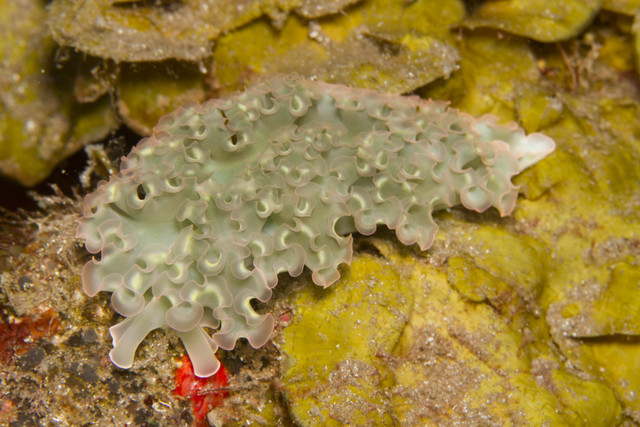 |
|||
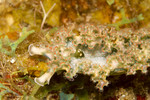 |
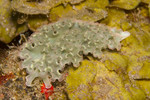 |
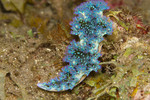 |
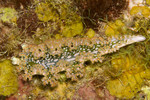 |
Technical Data: Canon EOS 7D, Canon EF 100mm f/2.8L Macro IS USM, 1/120th sec at f/16. Image Stabilization on. ISO 100. Ikelite Housing and Port with Ikelite 161 Strobe in TTL Mode. Raw conversion in Photoshop CS5.
... but he might have been right.
- Bill
Caribbean Explorer: Long-Horn Nudibranch
ktuli — Tue, 10/25/2011 - 21:55
More nudibranchs today... this is a Long-Horn Nudibranch (Austraeolis catina).
Technical Data: Canon EOS 7D, Canon EF 100mm f/2.8L Macro IS USM, 1/120th sec at f/16. Image Stabilization on. ISO 200. Ikelite Housing and Port with Ikelite 161 Strobe in TTL Mode. Raw conversion in Photoshop CS5.
- Bill
Caribbean Explorer: Purple-Crowned Sea Goddess Nudibranchs
ktuli — Sat, 10/22/2011 - 19:46
Well - if they're to be found, you had to know I'd get some photos of nudibranchs. While there wasn't as wide of an assortment as Wakatobi, I did end up seeing at least four species. However, without a doubt, this pair was the highlight of the trip in terms of nudis.
This is a pair of Purple-Crowned Sea Goddess (Chromodoris or Mexichromis kempfi).
At first, I thought this behavior may have been mating, but as it turns out, nudibranchs have their sexual organs on the right side of their head, so they would have had to have been side by side, not single file like this. It is possible that this trailing behavior is a prelude to mating, but it still seems uncommon (though, I've been able to find several other photos of this species exhibiting this trailing behavior).
None-the-less, I was told by our dive masters on the trip that this species of nudibranch is pretty rare to see in that area. Ad considering I was the one to find them (actually, only Anya and I got to see them during the dive as we were at the end of the group, and everyone else had moved on).
Technical Data: Canon EOS 7D, Canon EF 100mm f/2.8L Macro IS USM, 1/120th sec at f/16. Image Stabilization on. ISO 100. Ikelite Housing and Port with Ikelite 161 Strobe in TTL Mode. Raw conversion and cropped in Photoshop CS5.
The original shot (mouseover to see) was very nicely done, but I also felt it would benefit from a nice tight crop to fille the frame with just the nudis.
I'll be sharing some of the others both of these two and of the other species we saw soon.
- Bill
Wakatobi: Elisabeth's Chromodoris
ktuli — Mon, 08/29/2011 - 20:29
Well, it is official! I have my next dive trip scheduled! This time around, we'll be trying out some live-aboard diving with Caribbean Explorer going to Saba, St Kitts, and St Maarten.
To celebrate, here's a quick shot of another nudibranch from Wakatobi in Indonesia.
Technical Data: Canon EOS 7D, Canon EF 100mm f/2.8L Macro IS USM, 1/25th sec at f/8. Image Stabilization on. ISO 400 (Auto). Ikelite Housing and Port with Ikelite DS161 Strobe in TTL Mode. No post production.
The nudibranch is an Elisabeth's Chromodoris (Chromdoris elisabethina) and it is crawling on a tunicate.
I can't wait to go diving again!
- Bill
Wakatobi: Nudibranch & Flatworm Super Assortment
ktuli — Wed, 02/23/2011 - 21:07
As I said before, one of my favorite critters from Wakatobi were the nudibranchs and flatworms.
In rough terms, they both fall under what most people would call sea slugs. The main difference between the two are that nudibranchs have antennae called rhinophores and most have external gills, whereas flatworms do not have the rhinophores (though some like the Tiger Flatworm and Linda's Flatworm below adjust their head shape to fake them) nor any external gills.
Regardless, they're cool little things... take a look (mouseover the thumbnail for the larger view)
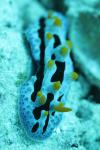 |
Sky Blue Phyllidia (Phyllidia coelestis) |
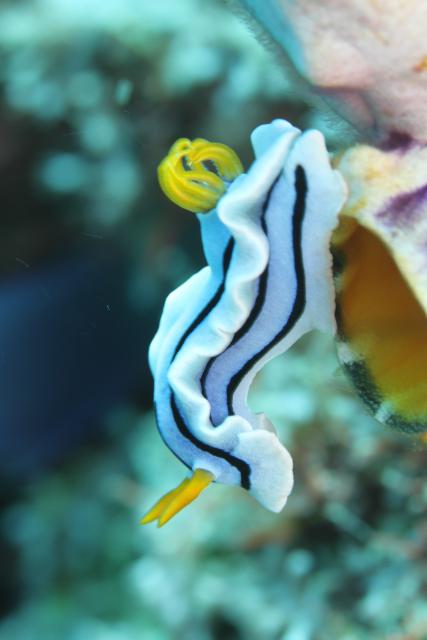 |
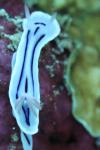 |
Willan's Chromodoris (Chromodoris willani) |
|
 |
Elisabeth's Chromodoris (Chromdoris elisabethina) |
|
 |
Racing Stripe Flatworm (Pseudoceros bifurcus) |
In reality, these are pretty tame looking nudibranchs, so I'm looking forward to another trip back to find more! I think if my count is correct, I photographed thirty-five different individuals (in nineteen dives!) consisting of four different species of flatworms and fifteen different species of nudibranchs.
So cool!
- Bill
Wakatobi: House Reef Assortment
ktuli — Tue, 02/15/2011 - 19:44
Ok - I'll skip all the blabbering today. Instead I'll just give a nice little assortment of some of the absolutely incredible stuff we got to see just stepping off the beach and diving on Wakatobi's house reef.

Banded Sea Snake (Laticauda colubrina)
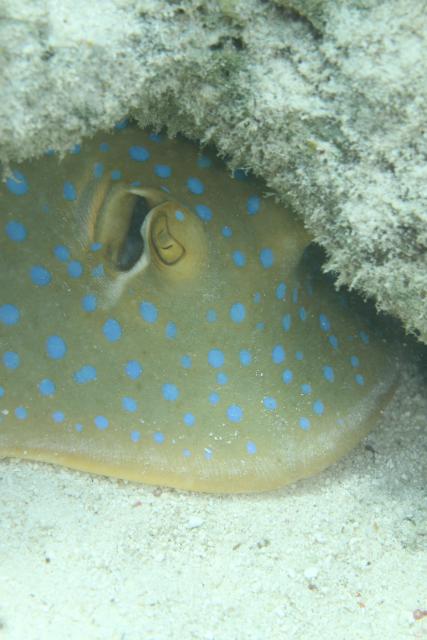
Blue-Spotted Ribbontail Ray (Taeniura lymma)

Crocodile Flathead (Cymbacephalus beauforti)
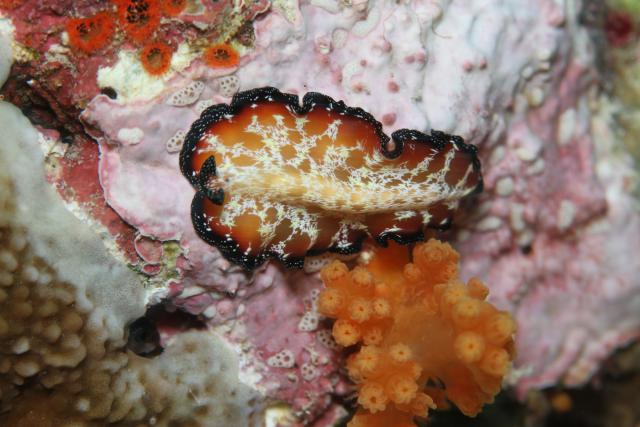
Lightning Flatworm (Pseudobiceros fulgor)
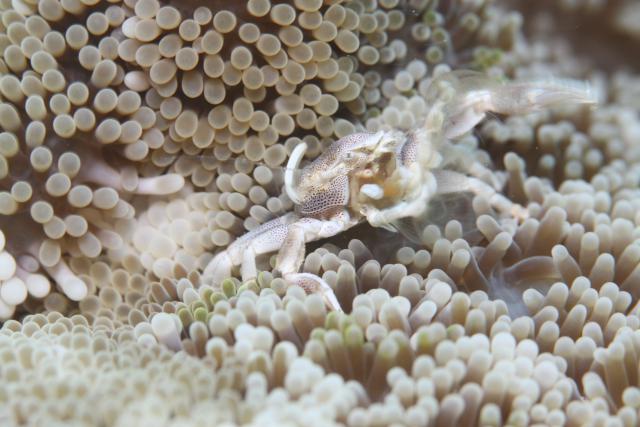
Spiny Porcelain Crab (Neopetrolisthes spinatus)

Twinspot (sometimes also Fu Manchu in the pet trade) Lionfish (Dendrochirus biocellatus)
I wish we had had another week that we could have spent just diving the house reef over and over. Perhaps next time!
- Bill
Wakatobi: Magnificent Chromodoris Nudibranch
ktuli — Sat, 02/12/2011 - 22:16
Today we'll start looking at one of my favorite subjects from the Wakatobi trip - nudibranchs and flatworms. I knew ahead of time that we would see some, but I was not prepared for how many. If my count is accurate, we saw around 35 different individuals (plus some more that we saw and weren't able to photograph) consisting of up to 15 different species of nudibranchs and 4 species of flatworms.
This little guy is a Magnificent Chromodoris (Chromodoris magnifica). C. magnifica can grow to about three and a half inches long, and are carnivores that feed on sponges. But really, they are just beautiful to look at.
At this point in the week, I had figured out some of my problems working with the strobe, and combined with the 8 frames per second burst rate on the 7D, I began to try a new technique for photographing subjects. I would make as slow and controlled of an approach as I possibly could, taking photos the entire way. Doing so would help to control my buoyancy (holding perfectly still in the water is still a bit difficult for me), and thus increase my number of keepers.
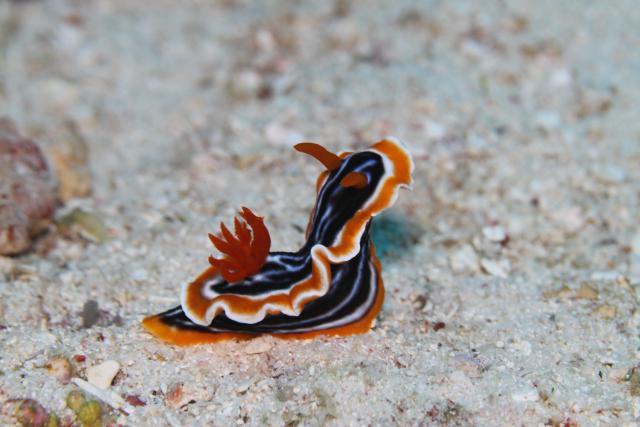
Technical Data: Canon EOS 7D, Canon EF 100mm f/2.8L Macro IS USM, 1/25th, 1/32nd, 1/40th, 1/32nd, 1/25th, 1/16th, 1/5th, 1/10th sec respectively at f/8. Image Stabilization on. ISO 400 (Auto). Ikelite Housing and Port with Ikelite DS161 Strobe in TTL Mode. No post production.
If you mouseover the thumbnails, the larger images will display; progressing through the set will show a bit more of the technique I was describing. There are a couple interesting things to note in the series...
First, you can notice that the earlier shots have a bluish cast to them (since they are unmodified). This is due to the amount of water the light has to travel to make the photo. Even with a strobe such as the Ikelite DS161, any increased distance from a subject will result in a bluish cast. The series makes it very apparent how that color cast goes away as you get closer to your subject and shorten the distance that the light has to travel.
Also, if you look at the second to last shot in the series (the closest one, second from right on bottom) you can see a slight amount of ghosting. The comes from the slow shutter speed of 1/6th of a second and the camera (and me along with it) moving during the exposure. I threw away the shots that were worse, but you can still see it slightly here. This may have been remedied had the camera selected a higher ISO, but that was not the case.
Finally, the last photo being further away from the subject is not a mistake in my ordering them here - that is actually how it was shot. I would also shoot as I backed away from a subject. To do so, I would either place a finger or two on the rock or substrate and push back (you never want to touch coral or most other living surfaces on a reef - both to prevent damage to the reef as well as to avoid injury, remember that most reef creatures have stinging cells called nematacyst) or simply inhale semi-deeply. The second technique is rather interesting and is very effective on slower approaches with no overhanging reef above me. While diving, even changing the volume of air within your lungs can change your buoyancy in the water (and since you're doing that constantly by breathing, it is apparent why it isn't exactly simple for everyone), and I have learned that if I take a slightly larger than normal breathe and hold it for a few seconds, I will slow rise in the water. As I rise, I then exhale to restore my buoyancy to the desired level (and to avoid pulmonary barotrauma).
I know that the majority of folks reading this probably won't benefit from the combination of photography and scuba technique suggestions, but if you ever do decide to try underwater photography, it is worth keeping in mind... ;)
I promise to share more nudibranch and flatworm shots as they were among my favorite subjects for the week. For now, thanks for stopping by, and I hope you enjoyed this magnificent little creature (yes, pun intended!)
- Bill
PS: If you haven't checked out the False Clownfish poll post from the the other day, please do so and cast your vote! If you did already check it out, swing on back as I updated with a photo of the cake the Wakatobi staff presented to me as a 'prize' for that photo!

